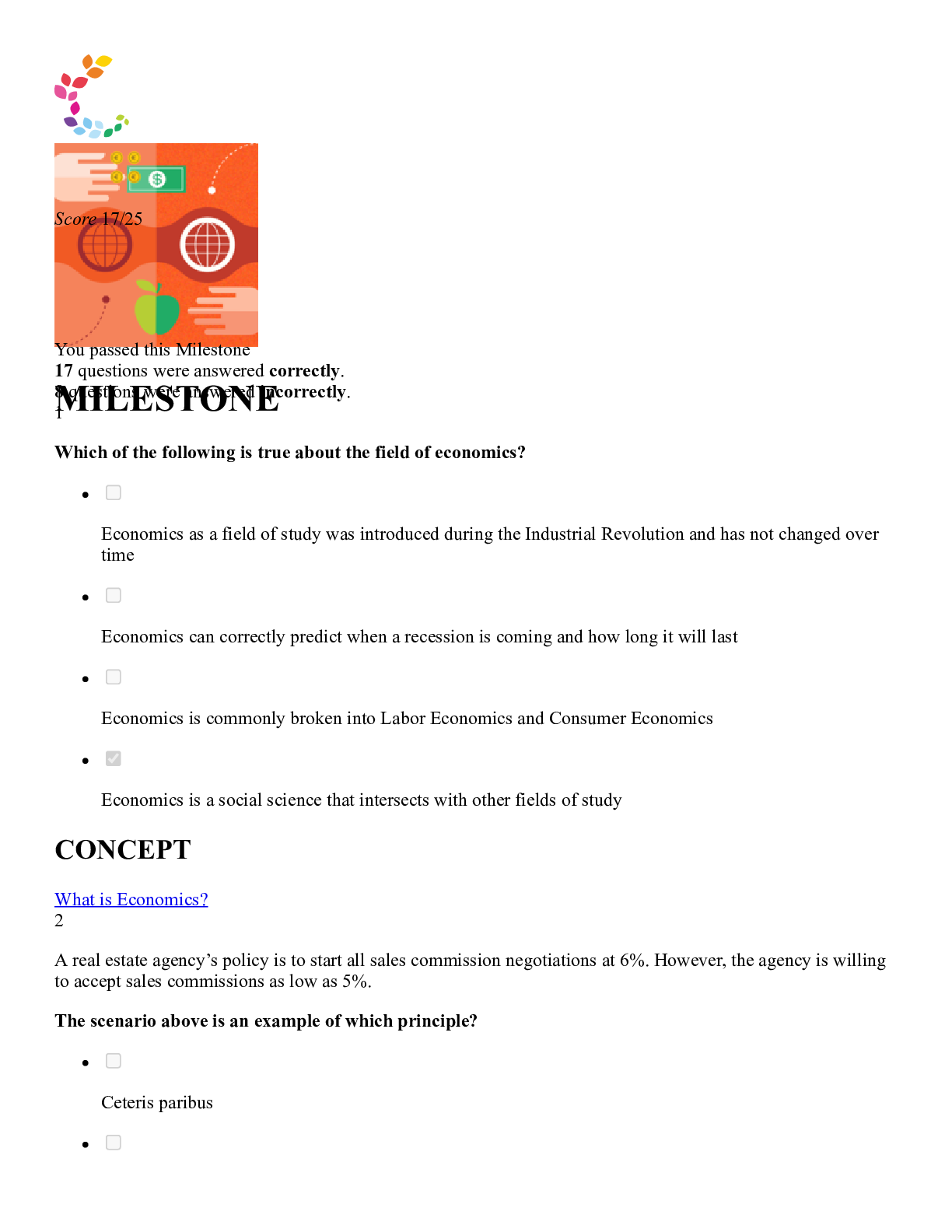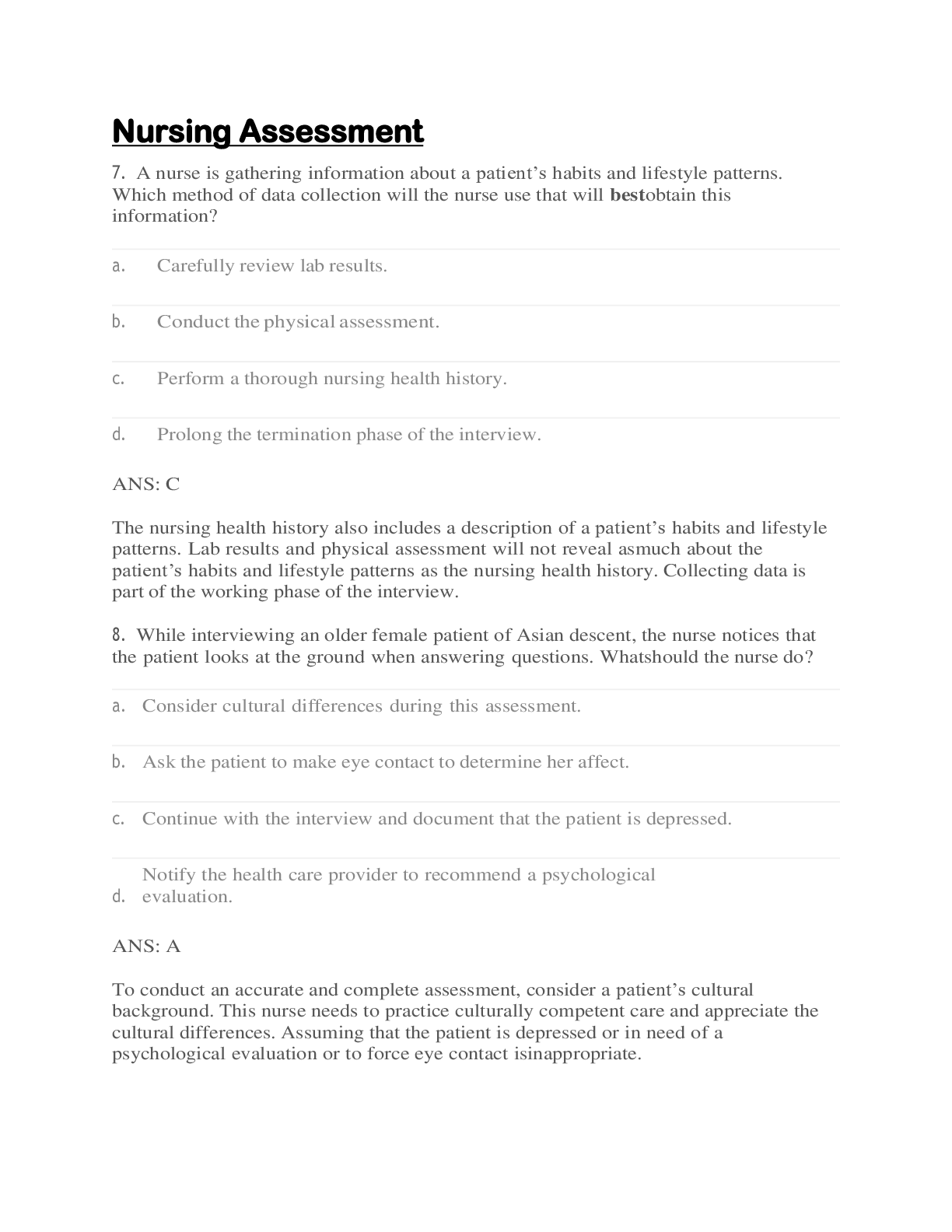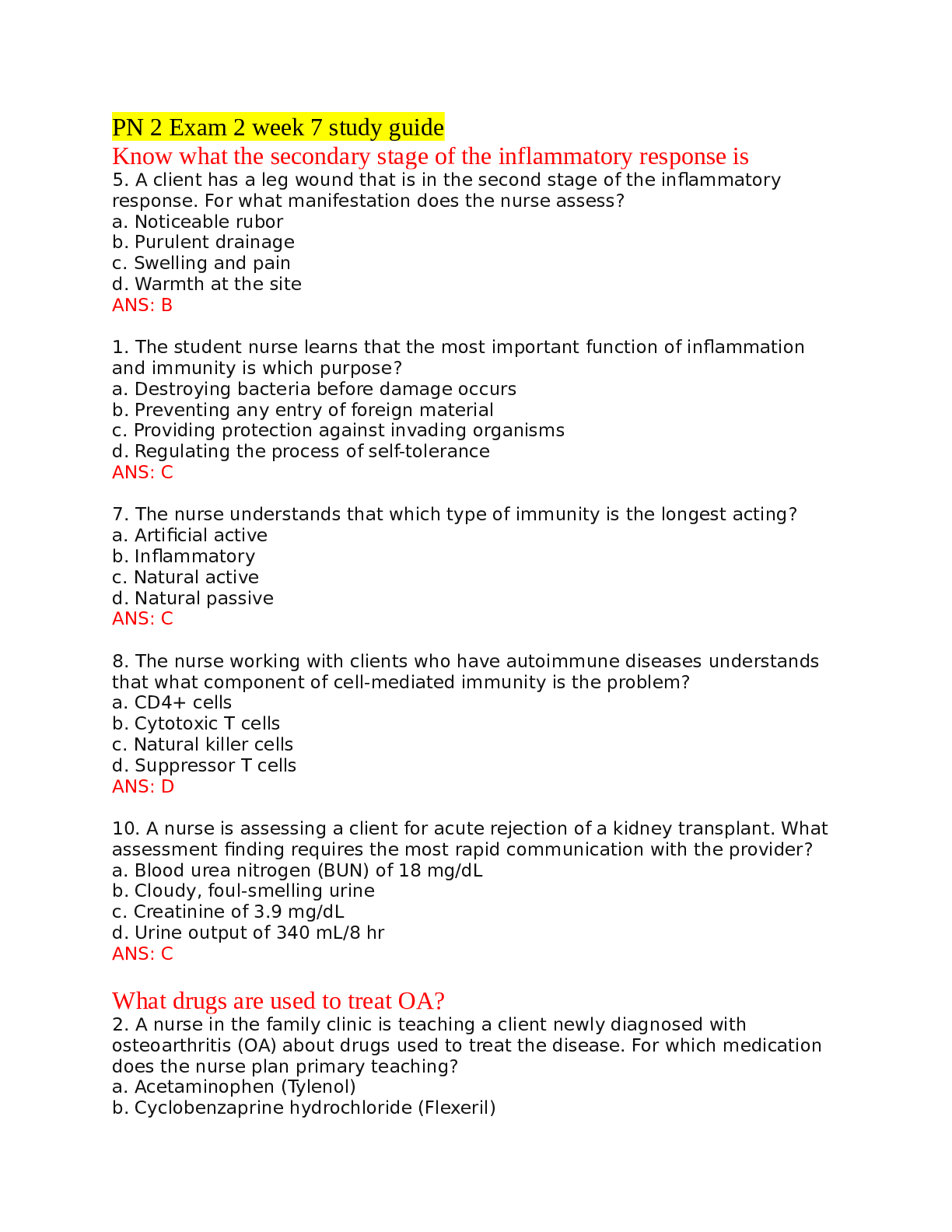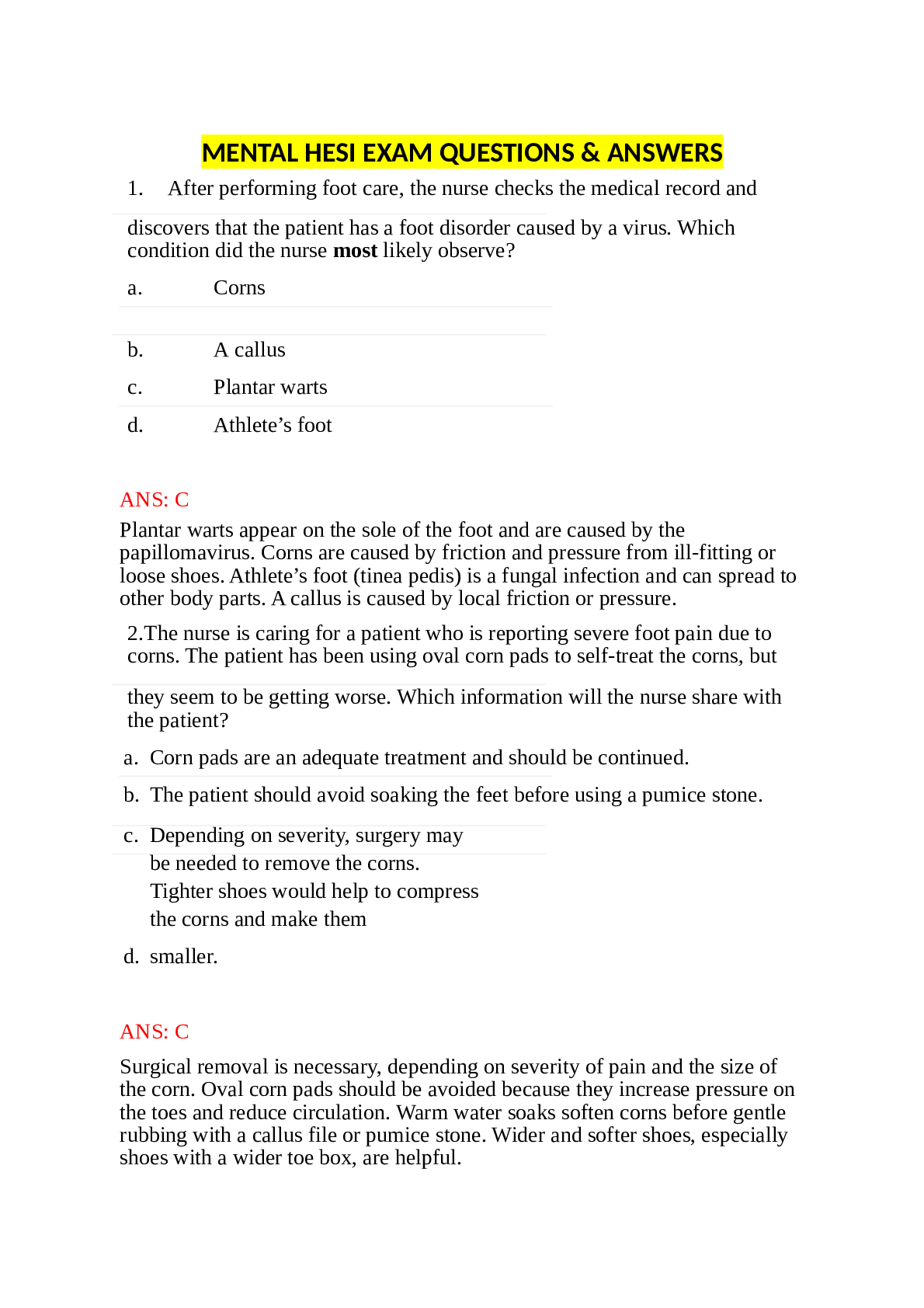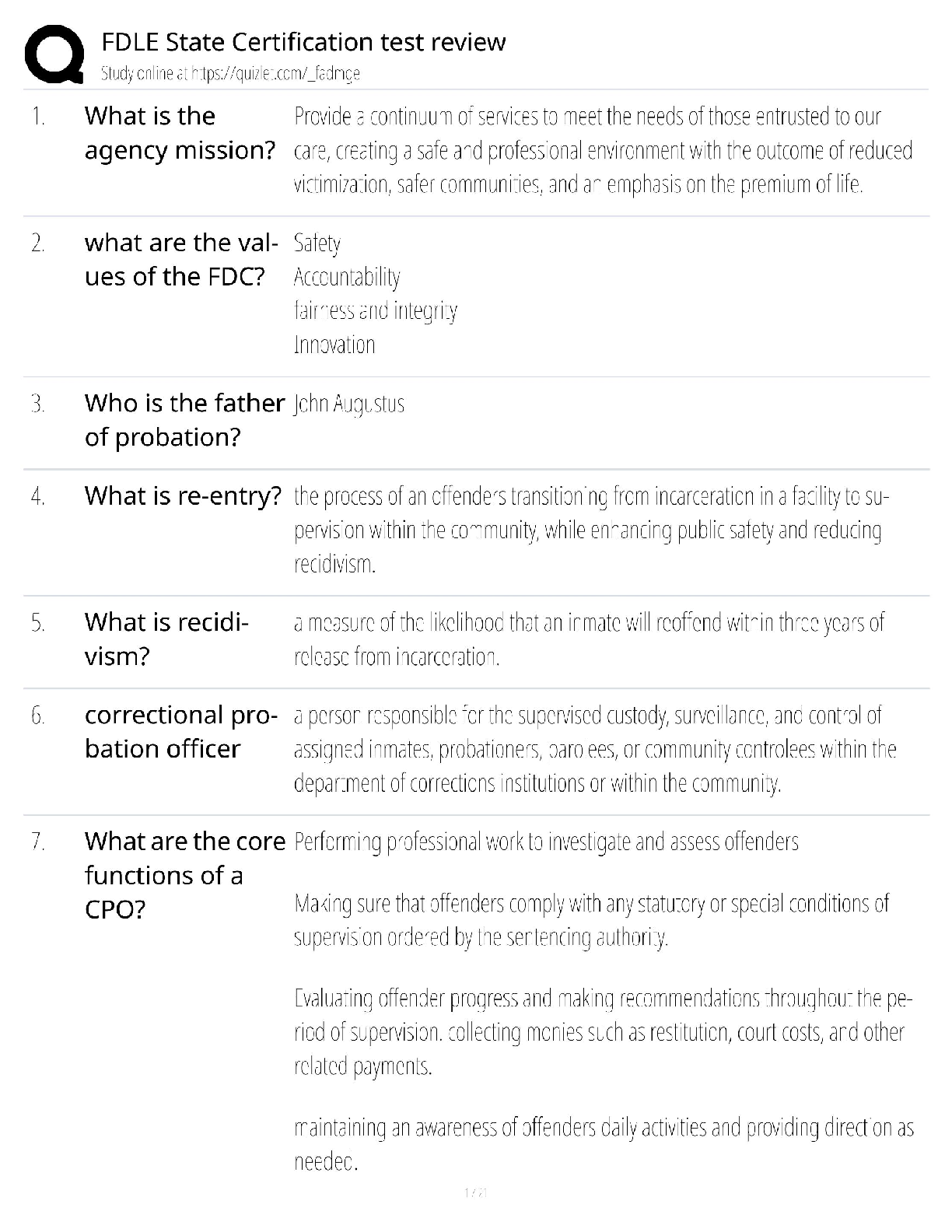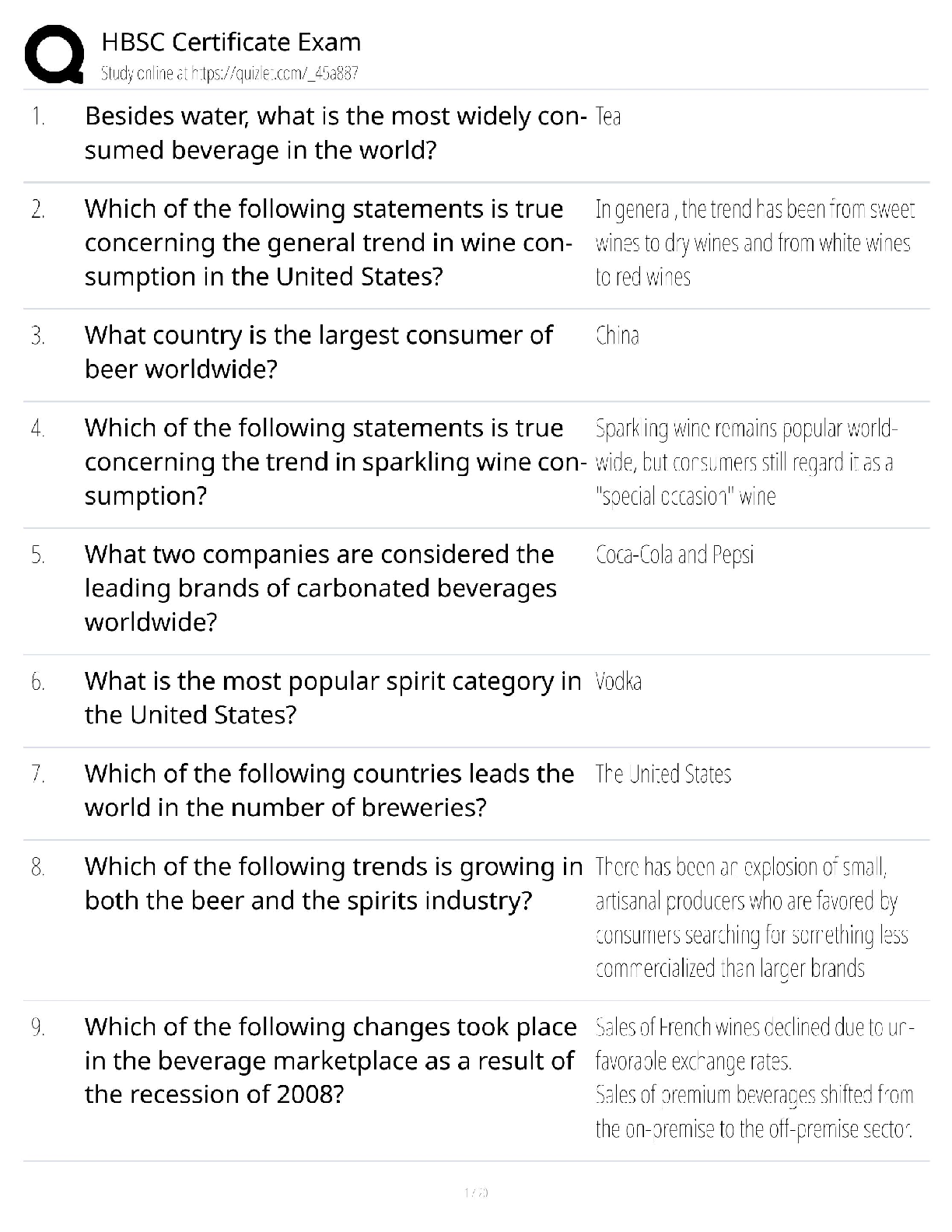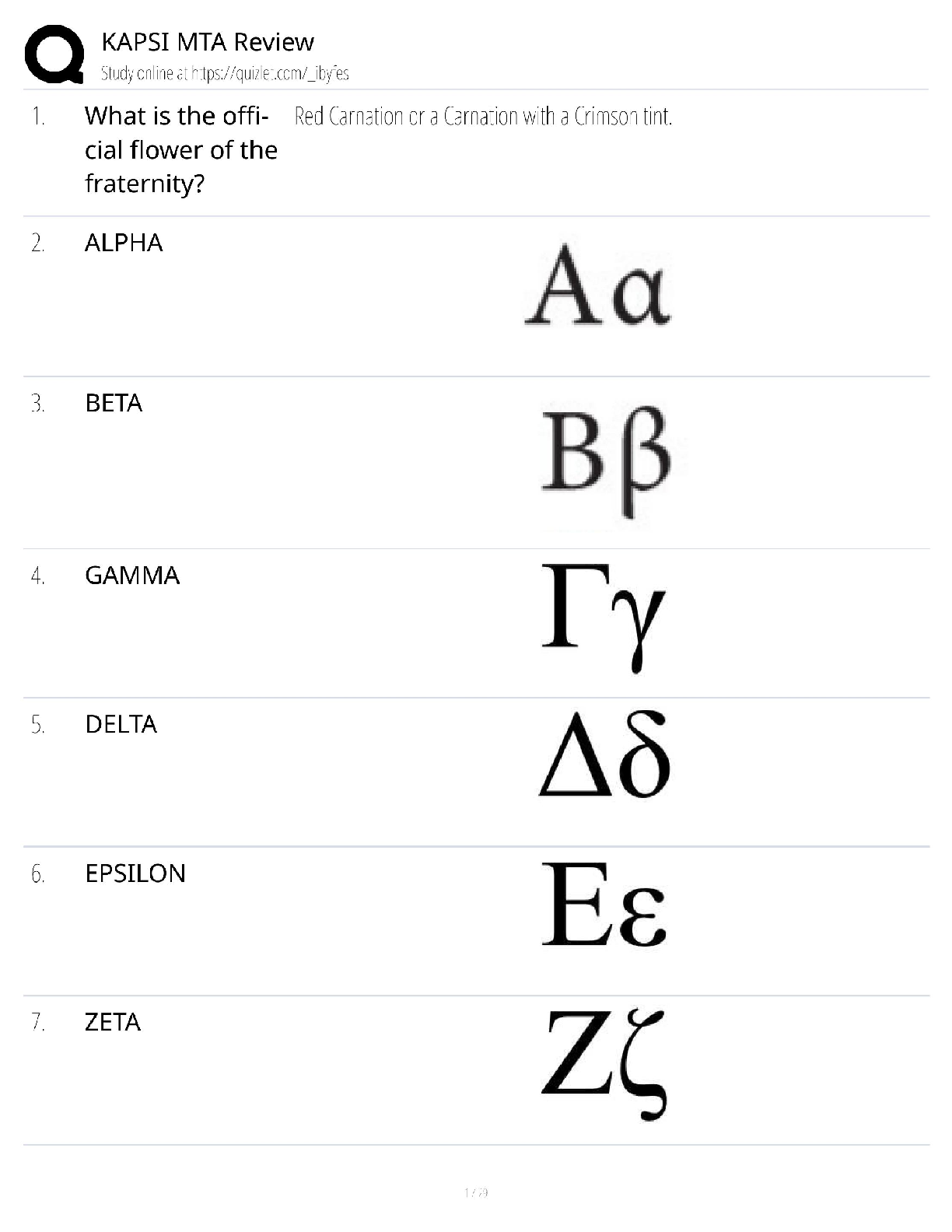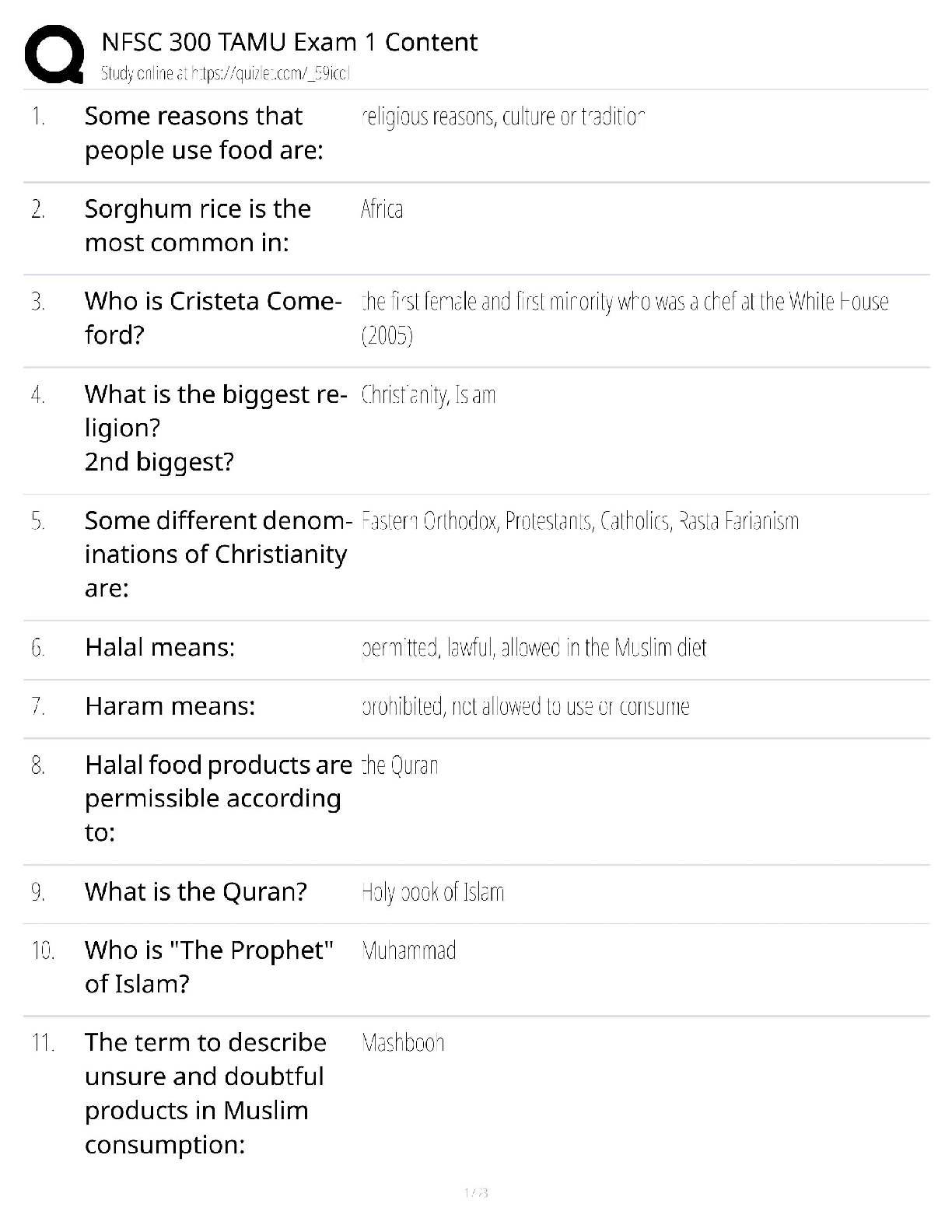Communication > QUESTIONS & ANSWERS > COM100 final part 2 (All)
COM100 final part 2
Document Content and Description Below
Question 1 of 50 It is not necessary to select an organization pattern for the body of your speech if your audience is familiar with the content. True False Question 2 of 50 Perception ... checking will not help you with Step 2 in DECIDE. True False Question 3 of 50 Claims support a thesis; proof supports claims; development supports proof. True False Question 4 of 50 Persuasive speeches that use coercion to force the audience to change the way individuals think and feel is ethical. True False Question 5 of 50 In public speaking situations, the listener determines your credibility as a speaker. True False Question 6 of 50 When you reduce listening barriers, you can increase your understanding of the sender's message. True False Question 7 of 50 Making choices about words for your messages involves situation and purpose, but does not need to involve audience. True False Question 8 of 50 A supportive climate for group communication exists when people know that they trust each other and can communicate openly. True False Question 9 of 50 Noise in the communication model is defined as literal sounds in the environment that interfere with communication, and it doesn't include any psychological thoughts, worries, and feelings that capture people's attention. True False Question 10 of 50 Empathic listening is the highest level of listening, but it is not difficult to master. True False Question 11 of 50 Listening for information would really only be used in the classroom. True False Question 12 of 50 Moving toward a problem-orientation during group discussion can decrease defensiveness and lead to more effective communication. True False Question 13 of 50 Gaining a better understanding of the elements of nonverbal communication can help you to create messages that are more precise and have more persuasive meaning. True False Question 14 of 50 Careful choice of conversational language in interpersonal communication situations depends on the same factors as choices of language in other situations. True False Question 15 of 50 Your audience will be more likely to understand your informative speech if you organize your ideas logically. True False Question 16 of 50 Communication is a transaction of creating shared meaning. True False Question 17 of 50 The introduction should be like a map of the speech since it allows the audience to anticipate the main ideas of your speech. True False Question 18 of 50 Strategies for making your informative speech more memorable include reinforcing key words verbally and nonverbally. True False Question 19 of 50 Group communication norms are only important to the group leader. True False Question 20 of 50 Your purpose for communicating should be evident to anyone who is listening to you. True False Question 21 of 50 A strategy for overcoming cultural barriers to listening is to listen for overall content. True False ..........................CONTINUED............................... [Show More]
Last updated: 3 years ago
Preview 1 out of 12 pages

Buy this document to get the full access instantly
Instant Download Access after purchase
Buy NowInstant download
We Accept:

Reviews( 0 )
$14.00
Can't find what you want? Try our AI powered Search
Document information
Connected school, study & course
About the document
Uploaded On
May 16, 2021
Number of pages
12
Written in
All
Additional information
This document has been written for:
Uploaded
May 16, 2021
Downloads
0
Views
59



